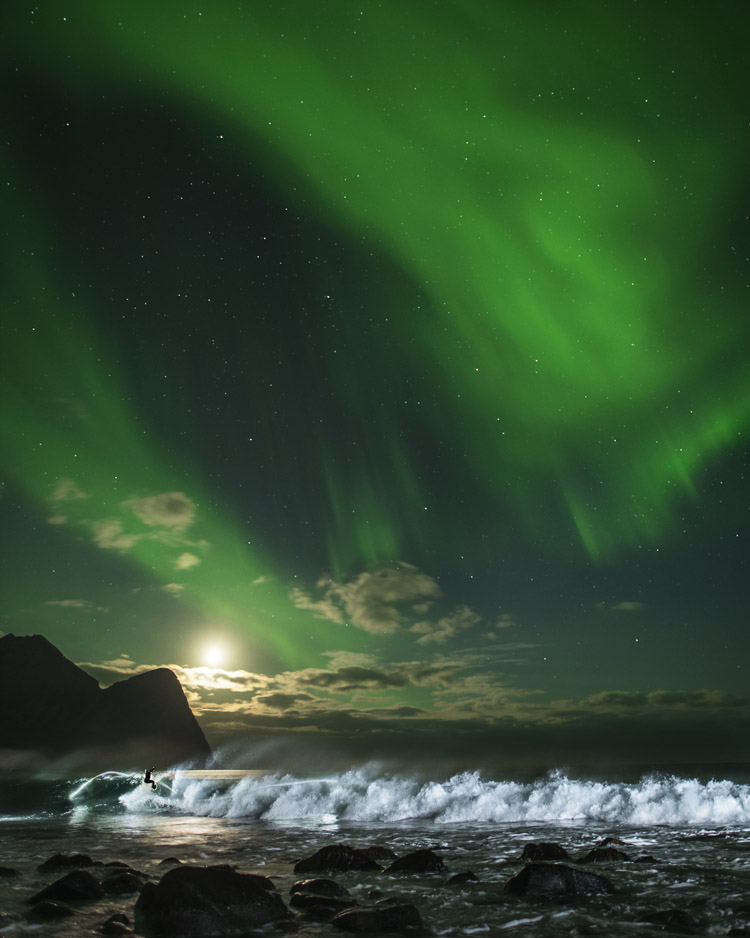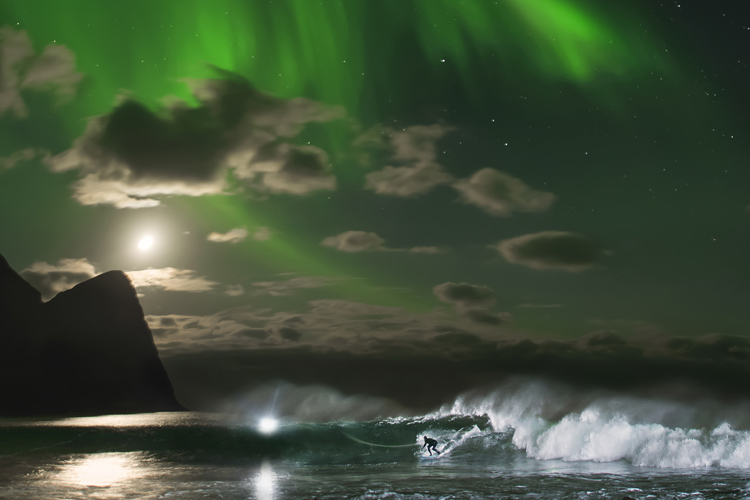Mick Fanning has ridden the Arctic waves of Lofoten, in Norway, underneath the Aurora Borealis.
The three-time world champion could not contain his delight after he journeyed to the Arctic Circle to undertake a magical adventure.
The 35-year-old Australian surfer had to combat freezing water completely at odds with his usual warm surfing conquests around the globe.
Conditions were a world away from the picturesque sunny stops he had enjoyed during his competitive life on world surfing tours.

A Unique Experience
Fanning's stylish surf moves under dazzling, green night skies were captured on camera by Norwegians Mats Andreassen Grimsaeth and Emil Kjos Sollie, who were thrilled with the outcome.
"Surfing under the Northern Lights was something I will remember forever. The Aurora Borealis was dancing across the sky," explains Mick Fanning.
"The shoot itself was tricky. We sat out for two nights in a row, waiting for the lights to come. I found myself half asleep, jumping in a wetsuit and heading out!"
The Northern Lights are the result of multiple collisions between charged particles released from the sun's atmosphere and gaseous particles in the Earth's atmosphere.
The most common auroral color is the pale yellowish-green.
The best places to watch the Aurora Borealis are the south of Iceland and Greenland, the northern coast of Norway, and coastal regions located north of Siberia.
"When I first came in, I thought we had nothing, but it is pretty amazing what the boys could capture. I count myself lucky I had the opportunity to do so. It's another world up here in Norway," concluded Fanning.
